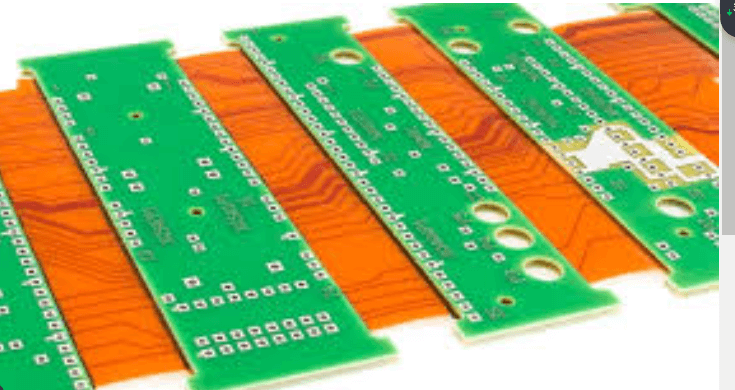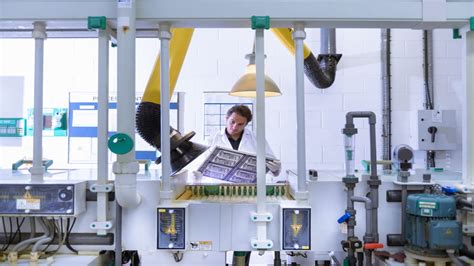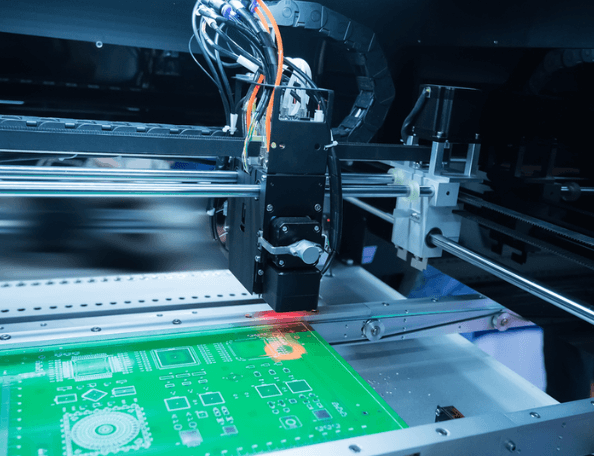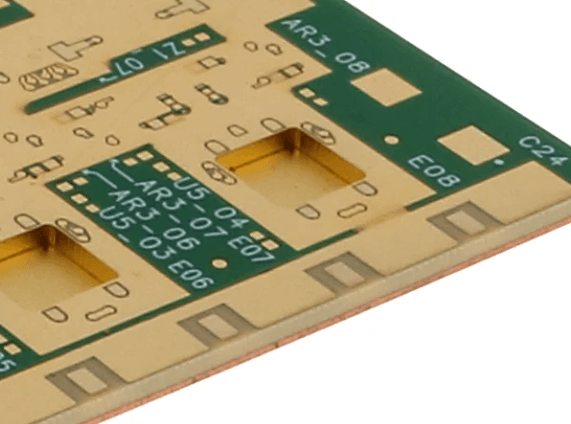Flex pcb substrate
Advantages Of Using Flex PCB Substrate In Modern Electronics
Flex PCB substrates have become increasingly popular in modern electronics due to their numerous advantages over traditional rigid PCBs. One of the primary benefits of using flex PCB substrates is their ability to conform to various shapes and sizes, which allows for greater design flexibility. This adaptability is particularly valuable in applications where space constraints are a significant concern, such as in wearable technology, medical devices, and compact consumer electronics. By enabling more efficient use of available space, flex PCBs contribute to the development of smaller, lighter, and more portable electronic devices.
Another notable advantage of flex PCB substrates is their enhanced durability.
Unlike rigid PCBs, which can be prone to cracking and breaking under mechanical stress, flex PCBs are designed to withstand bending, folding, and twisting. This resilience makes them ideal for use in environments where electronic components are subject to constant movement or vibration, such as in automotive and aerospace applications. Additionally, the inherent flexibility of these substrates can help absorb and dissipate mechanical shocks, further protecting the integrity of the electronic components.
The improved thermal management capabilities of flex PCB substrates also play a crucial role in their growing adoption.
Flex PCBs can be designed with materials that offer superior heat dissipation properties, which is essential for maintaining the performance and reliability of electronic devices. Efficient thermal management is particularly important in high-power applications, where excessive heat can lead to component failure and reduced lifespan. By effectively managing heat, flex PCBs help ensure the longevity and stability of electronic systems.
Moreover, the use of flex PCB substrates can lead to significant cost savings in the manufacturing process.
The ability to integrate multiple components and interconnections into a single flexible substrate reduces the need for additional connectors and wiring, which can simplify assembly and lower production costs. Furthermore, the reduced weight and size of flex PCBs can result in lower shipping and handling expenses. These cost advantages make flex PCBs an attractive option for manufacturers looking to optimize their production processes and improve overall efficiency.
In addition to these practical benefits, flex PCB substrates also offer enhanced electrical performance.
The shorter and more direct interconnections possible with flex PCBs can lead to reduced signal loss and improved signal integrity. This is particularly important in high-frequency applications, where maintaining signal quality is critical. The ability to design complex, multi-layer flex PCBs also allows for greater circuit density and functionality, enabling the development of more sophisticated and capable electronic devices.
Furthermore, the environmental benefits of flex PCB substrates should not be overlooked.
The materials used in flex PCBs are often more environmentally friendly than those used in rigid PCBs, and the reduced need for additional connectors and wiring can lead to less electronic waste. As the electronics industry continues to prioritize sustainability, the adoption of flex PCB substrates can contribute to more eco-friendly manufacturing practices.
In conclusion, the advantages of using flex PCB substrates in modern electronics are manifold. Their design flexibility, enhanced durability, improved thermal management, cost savings, superior electrical performance, and environmental benefits make them an increasingly attractive option for a wide range of applications. As technology continues to evolve and the demand for more compact, reliable, and efficient electronic devices grows, the use of flex PCB substrates is likely to become even more prevalent in the industry.
Manufacturing Process Of Flex PCB Substrate
The manufacturing process of flex PCB substrates is a sophisticated and intricate procedure that requires precision and advanced technology. Flex PCBs, or flexible printed circuit boards, are essential components in modern electronics, offering versatility and durability in applications where traditional rigid PCBs would be unsuitable. The process begins with the selection of the base material, typically a polyimide film, known for its excellent thermal stability and flexibility. This material serves as the foundation upon which the circuit is built.
Once the base material is chosen, the next step involves the application of a conductive layer, usually copper.
This is achieved through a process called lamination, where the copper foil is bonded to the polyimide substrate using heat and pressure. The lamination process must be carefully controlled to ensure uniform adhesion and to prevent any defects that could compromise the integrity of the final product. Following lamination, the copper-clad substrate undergoes a cleaning process to remove any contaminants that might interfere with subsequent steps.
The cleaned substrate is then subjected to a photoresist application.
Photoresist is a light-sensitive material that is applied to the surface of the copper layer. This step is crucial as it allows for the precise patterning of the circuit design. The photoresist-coated substrate is exposed to ultraviolet light through a photomask, which contains the desired circuit pattern. The areas of the photoresist exposed to the light harden, while the unexposed areas remain soft and can be easily removed in the development process.
After development, the substrate undergoes an etching process.
During etching, a chemical solution is used to remove the unprotected copper, leaving behind the intricate circuit pattern defined by the hardened photoresist. This step requires meticulous control to ensure that the etching solution does not undercut the photoresist, which could lead to inaccuracies in the circuit design. Once etching is complete, the remaining photoresist is stripped away, revealing the final copper circuit pattern on the flexible substrate.
To enhance the durability and performance of the flex PCB, additional layers such as solder mask and protective coatings may be applied.
The solder mask, typically a polymer-based material, is applied over the copper traces to prevent short circuits and to protect the circuit from environmental factors such as moisture and dust. The application of these protective layers is followed by a curing process, where the substrate is subjected to heat to harden the coatings.
The final steps in the manufacturing process involve drilling and plating.
Precision drilling is used to create vias and holes that allow for electrical connections between different layers of the PCB or for mounting components. These holes are then plated with a conductive material, usually copper, to ensure reliable electrical connectivity. The substrate may also undergo additional surface treatments, such as gold plating, to improve solderability and to enhance the overall performance of the PCB.
In conclusion, the manufacturing process of flex PCB substrates is a complex and multi-step procedure that demands high levels of precision and control. From the selection of the base material to the final surface treatments, each step is critical in ensuring the quality and reliability of the finished product. The ability to produce flexible, durable, and high-performance PCBs is essential in meeting the demands of modern electronic applications, making the manufacturing process of flex PCB substrates a cornerstone of the electronics industry.
Common Applications Of Flex PCB Substrate In Various Industries
Flex PCB substrates, also known as flexible printed circuit boards, have become increasingly prevalent across a multitude of industries due to their unique properties and versatile applications. These substrates are composed of flexible materials, such as polyimide or polyester films, which allow them to bend and conform to various shapes and spaces. This flexibility, combined with their lightweight nature and high reliability, makes them an ideal choice for numerous applications.
One of the primary industries that benefit from flex PCB substrates is the consumer electronics sector.
In this domain, the demand for compact, lightweight, and durable devices is ever-growing. Flex PCBs are integral to the design and functionality of smartphones, tablets, and wearable technology. Their ability to fit into tight spaces without compromising performance is crucial for the miniaturization of these devices. Moreover, the durability of flex PCBs ensures that these gadgets can withstand the rigors of daily use, including bending and twisting, without suffering from electrical failures.
Transitioning to the automotive industry, flex PCB substrates play a pivotal role in modern vehicle design and manufacturing.
As vehicles become more technologically advanced, the need for reliable and efficient electronic systems has surged. Flex PCBs are used in various automotive applications, including dashboard displays, infotainment systems, and advanced driver-assistance systems (ADAS). Their flexibility allows for innovative design solutions, such as curved displays and compact sensor modules, which enhance both the functionality and aesthetics of modern vehicles. Additionally, the robust nature of flex PCBs ensures that they can endure the harsh conditions often encountered in automotive environments, such as extreme temperatures and vibrations.
In the medical field, the adoption of flex PCB substrates has revolutionized the development of medical devices.
These substrates are essential in the creation of compact, lightweight, and flexible medical equipment, such as wearable health monitors, implantable devices, and diagnostic tools. For instance, flex PCBs are used in the design of pacemakers and hearing aids, where their ability to conform to the human body’s contours is critical. Furthermore, the reliability and precision of flex PCBs are paramount in medical applications, where device failure can have serious consequences.
The aerospace industry also leverages the advantages of flex PCB substrates.
In this sector, the need for lightweight and reliable electronic systems is paramount due to the stringent weight and space constraints of aircraft and spacecraft. Flex PCBs are employed in various aerospace applications, including communication systems, navigation equipment, and control systems. Their ability to withstand extreme conditions, such as high altitudes and intense vibrations, makes them an indispensable component in aerospace technology.
Moreover, the industrial sector has seen significant advancements through the use of flex PCB substrates.
Industrial automation and robotics rely heavily on these substrates for their electronic control systems. Flex PCBs enable the design of compact and efficient control units that can be integrated into robotic arms and automated machinery. Their flexibility allows for greater design freedom, enabling the creation of more sophisticated and capable industrial systems.
In conclusion, the versatility and unique properties of flex PCB substrates have led to their widespread adoption across various industries. From consumer electronics and automotive applications to medical devices and aerospace technology, flex PCBs provide the flexibility, reliability, and efficiency required to meet the demands of modern technological advancements. As industries continue to evolve and innovate, the role of flex PCB substrates is likely to expand further, driving the development of even more advanced and compact electronic systems.
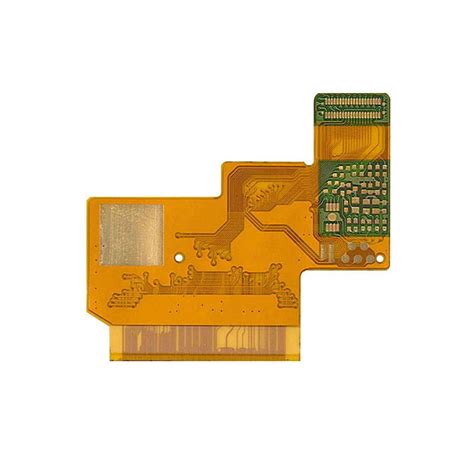
Design Considerations For Flex PCB Substrate
When designing a flex PCB substrate, several critical considerations must be taken into account to ensure optimal performance and reliability. The unique properties of flexible printed circuit boards (PCBs) necessitate a thorough understanding of material selection, mechanical constraints, and electrical performance. By carefully addressing these factors, designers can create robust and efficient flex PCBs suitable for a wide range of applications.
To begin with, material selection is paramount in the design of flex PCB substrates.
The choice of substrate material directly impacts the flexibility, durability, and thermal performance of the final product. Polyimide is a commonly used material due to its excellent thermal stability, mechanical strength, and flexibility. It can withstand high temperatures and harsh environmental conditions, making it ideal for applications in aerospace, medical devices, and consumer electronics. Additionally, the adhesive used to bond the layers of the flex PCB must be carefully chosen to ensure it can endure repeated bending and flexing without delaminating.
Transitioning to mechanical considerations, the design of a flex PCB must account for the bending radius and dynamic flexing requirements.
The bending radius is the minimum radius that the flex PCB can be bent without causing damage to the conductive traces or the substrate itself. A smaller bending radius allows for more compact designs but requires careful attention to the layout and material properties. Dynamic flexing, on the other hand, refers to the repeated bending and flexing that the PCB will undergo during its operational life. To enhance the durability of the flex PCB under dynamic conditions, designers should avoid sharp corners and stress points, distribute the bending stress evenly, and use staggered or serpentine trace patterns.
In addition to mechanical factors, electrical performance is a crucial aspect of flex PCB design.
Signal integrity, impedance control, and electromagnetic interference (EMI) are key considerations that must be addressed to ensure reliable operation. Signal integrity can be maintained by minimizing the length of signal traces, using controlled impedance traces, and incorporating proper grounding techniques. Impedance control is particularly important for high-frequency applications, where variations in impedance can lead to signal reflections and loss. To achieve controlled impedance, designers can use specific trace widths, spacing, and dielectric thicknesses tailored to the desired impedance values. EMI can be mitigated by using shielding layers, proper grounding, and careful trace routing to minimize noise and crosstalk.
Furthermore, thermal management is an essential consideration in flex PCB design.
The flexible nature of the substrate can pose challenges in dissipating heat generated by electronic components. Effective thermal management strategies include the use of thermal vias, heat sinks, and conductive materials to facilitate heat dissipation. Additionally, the layout should be optimized to ensure adequate airflow and minimize hotspots.
Lastly, manufacturability and cost are practical considerations that must be balanced with performance requirements.
The complexity of the flex PCB design can impact the manufacturing process and overall cost. Designers should work closely with manufacturers to ensure that the design is feasible and cost-effective. This collaboration can help identify potential issues early in the design process and allow for adjustments that streamline production and reduce costs.
In conclusion, designing a flex PCB substrate involves a comprehensive approach that addresses material selection, mechanical constraints, electrical performance, thermal management, and manufacturability. By carefully considering these factors, designers can create flexible PCBs that meet the demanding requirements of modern electronic applications, ensuring reliability and efficiency throughout their operational life.

